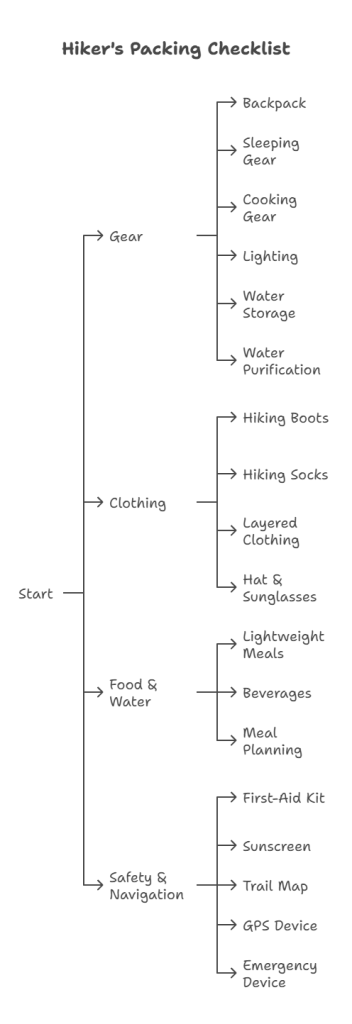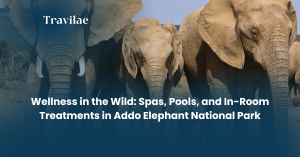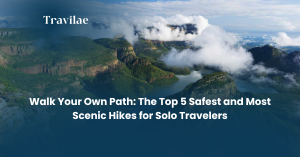The Ultimate Desert Challenge
Imagine standing alone in a vast, silent landscape, with nothing but the ancient granite under your feet and a ceiling of brilliant stars above. This is the essence of the Klipspringer Hiking Trail, a journey that takes you deep into the heart of Augrabies Falls National Park’s remote wilderness. This isn’t just a walk; it’s a three-day test of endurance, self-reliance, and spirit. Forget the crowds at the viewpoints—this is your chance to experience the raw, untamed soul of the Kalahari. This guide is your complete companion to planning, surviving, and conquering one of South Africa’s toughest and most rewarding multi-day hikes.
Table of Contents
What is the Klipspringer Trail?
The Klipspringer Trail is a physically demanding 39.5 km, three-day, two-night circular route. It’s designed for experienced and well-prepared hikers seeking a true wilderness experience. The trail is marked but rugged, leading you away from all park infrastructure and into the depths of the Orange River gorge and surrounding desert plains. It is a profound immersion into a landscape carved by water and time.
- Difficulty: Strenuous and challenging. Not for novice hikers.
- Distance: ~39.5 km (24.5 miles) over 3 days.
- Environment: Exposed, rocky terrain with steep ascents/descents and sections of soft sand.
- Group Size: Minimum of 2, maximum of 12 hikers.
Planning Your Klipspringer Trail Adventure
Success on this trail is all about meticulous preparation.
Best Time to Hike (The Hiking Season)
The trail is only open during the South African autumn and winter months, from 1 April to 14 October. Hiking outside this period is dangerously hot. The cooler, dry weather provides the safest and most pleasant conditions for this strenuous trek.
Booking, Permits, and Costs
You must book the trail well in advance through the official SANParks website or their central reservations. The trail fee includes the two nights in basic wilderness huts. You will also need to pay the standard park conservation fees upon entry.
Essential Fitness & Experience
This cannot be overstated: you must be fit and have previous multi-day hiking experience. You will be carrying a full pack with all your food, water, and gear in a remote, exposed environment with no escape routes. You are responsible for your own safety.
What to Pack: A Hiker’s Checklist

Pack light, but pack smart. Everything you need for 3 days must be in your backpack.
- Gear:
- A comfortable 50-65L hiking backpack.
- Lightweight sleeping bag and sleeping mat.
- Small gas stove, pot, and lighter/matches.
- Headlamp or torch with extra batteries.
- Water bottles or bladder with a capacity of at least 3 liters.
- Water purification tablets or filter.
- Clothing:
- Well-worn, sturdy hiking boots with good ankle support.
- Moisture-wicking hiking socks (bring spares).
- Layered clothing: hiking shorts/trousers, t-shirts, fleece/warm mid-layer, and a wind/rain jacket.
- Wide-brimmed hat and sunglasses.
- Food & Water:
- Lightweight, high-energy meals (dehydrated food, oats, trail mix, energy bars).
- Coffee/tea and powdered milk.
- Enough food for 2 dinners, 2 lunches, and 3 breakfasts.
- Safety & Navigation:
- A comprehensive first-aid kit (blister care is crucial!).
- Sunscreen (SPF 50+).
- Park-issued trail map.
- GPS device or phone with downloaded maps is highly recommended.
- Emergency communication device (satellite phone/personal locator beacon).
The Trail: A Day-by-Day Breakdown
Day 1: Descent into the Gorge (13.5 km)
The trail begins near the park’s main camp. The first day is a relatively gentle introduction, leading you across a rocky plateau with stunning views before beginning a steady descent towards the Orange River. The landscape feels increasingly remote with every step. You’ll finish the day at the Fish Eagle Cabin, a simple hut set in a beautiful, secluded spot near the river.
Day 2: The Heart of the Gorge (13 km)
This is the most challenging and spectacular day. The route involves scrambling over boulders, navigating through dense riverine vegetation, and walking on sandy patches along the river’s edge. The sheer granite cliffs tower above you, and the sense of isolation is total. The day ends at the Swart Rante Cabin, perched with a commanding view of the gorge. This is where you’ll feel the true, wild spirit of Augrabies.
Day 3: The Ascent and Homeward Stretch (13 km)
The final day involves a strenuous but rewarding climb out of the gorge and back onto the desert plains. As you ascend, the views open up, giving you a final, breathtaking panorama of the wilderness you’ve just traversed. The trail ends back at the main rest camp, where a hot shower and a proper meal will feel like the greatest luxury in the world.
A Hiker’s Moment: The Roar of Silence
On the second night, I sat outside the Swart Rante hut. The sun had bled out of the sky, leaving behind a deep indigo canvas. There were no man-made lights, no sounds of traffic, no cell signal. The silence was so complete it was almost a physical presence, broken only by the distant murmur of the river. And then, the stars came out. Not as scattered points, but as a thick, shimmering river of light across the entire sky. In that moment, exhausted and sore, with nothing but what I could carry on my back, I felt a profound sense of peace and accomplishment. The Klipspringer Trail doesn’t just test your body; it strips away the noise and reminds you of what’s truly essential.
Klipspringer Trail: Travel FAQs
1. How difficult is the Klipspringer Trail really? It is rated as strenuous. The difficulty comes from the rugged terrain, the weight of your pack, and the exposed environment. It is not a technically difficult climb, but it requires excellent physical fitness and stamina.
2. Are the overnight huts equipped? The two huts (Fish Eagle and Swart Rante) are very basic. They provide bunks with mattresses, a toilet (“long drop”), and a fresh water tank. There is no electricity, no showers, and no cooking equipment.
3. Do I need to carry all my water? You should start with at least 3 liters. Water is available at the two overnight huts, but it must be treated (boiled, filtered, or purified) before drinking. Do not drink directly from the Orange River.
4. Is there cell phone signal on the trail? No. Expect to have zero cell phone signal for the entire duration of the hike. A satellite phone or personal locator beacon is recommended for emergencies.
5. What kind of wildlife might I see? While hiking, you may spot Klipspringers (small antelope), baboons, various bird species, and reptiles. Wildlife is shy, so encounters are a matter of luck. Be mindful of snakes and scorpions, especially around the huts.
A Challenge for the Soul
The Klipspringer Trail is far more than just a hike. It’s a pilgrimage into one of the planet’s most ancient and dramatic landscapes. It will test you, push you, and leave you with an unshakable sense of achievement. For the adventure traveler who wants to earn their views and experience true solitude, this is the ultimate Augrabies adventure.
Are you an experienced hiker looking for your next big challenge? Let us know in the comments!






